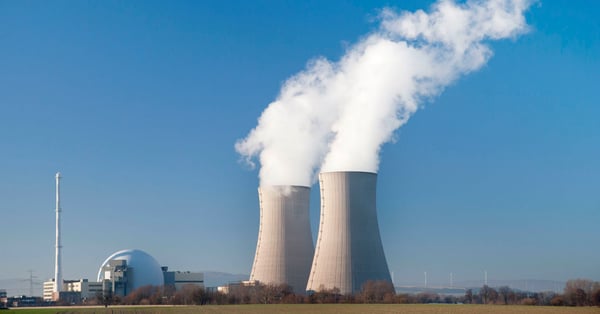In nuclear power plants, there are many applications requiring a high degree of accuracy in pressure and temperature measurements. The following three instances explain how precision pressure instruments can increase efficiency, eliminate downtime and promote safety in power plants:
- Modularity in pressure controllers/calibrators
- Verifying positive pressure in control rooms
- Increasing steam turbine efficiency

Modularity in Nuclear Power Plants
In areas of a nuclear plant where operational pressure transmitters are exposed to radiation or are susceptible to radioactive contamination, it is desirable to calibrate these components within the "hot" areas of the plant. This eliminates the need to remove the transmitters from these areas every time a test or calibration is needed. It also serves to minimize contamination in other areas of the plant.
Precision pressure controllers/calibrators employ high accuracy sensors within a chassis. Besides the sensors, the chassis may have a pressure regulator, manifolds, solenoid valves, electronics, fans and other components. The pressure transducers in these controllers occasionally need to be calibrated themselves, but removing the whole instrument from the hot area can be operationally inefficient to say the least. An easily removable reference pressure transducer within these controllers/calibrators makes this operation more efficient; it takes less effort and regulatory paperwork to remove a transducer from the hot area as opposed to the whole instrument.
If these reference transducers are removable and interchangeable then a freshly calibrated reference sensor can be used while the removed one is being calibrated. This in turn virtually eliminates downtime for the calibrator.
Verification in Nuclear Power Plants
Nuclear power plants have large control rooms where most components, if not all, can be monitored or controlled. These control rooms maintain a positive pressure inside to allow the operators to continue work in a contaminant free environment in case of an emergency. The positive pressure in the the control room is required to be about 1/8 inch of water (0.0045 psi). This does not seem like much, but when this pressure is applied over the total surface area of the entire room, it becomes significant and is sufficient to ensure a positive flow of air from inside to outside.
To monitor this pressure difference between the inside and the outside of the room, a differential pressure sensor is used. This requires the wall of the room be penetrated so the high side of the sensor can be exposed to the inside of the room, while the low side is exposed to the outside. Another novel way to verify a positive pressure is to use a high accuracy portable barometric pressure calibrator with a tare function.
Set the portable barometric calibrator to display inches of water, stand outside the control room holding the calibrator at a specific height, apply a tare to the sensor so that it reads zero, then walk into the control room with the calibrator at the same height. A positive pressure should be displayed equal to the differential pressure between the outside of the room and the inside. This method can be employed to verify a positive pressure exists in the control room if you're unable to penetrate the wall with a differential sensor.
You might think this would be quite a task for a barometer but let's analyze it: The error in this difference measurement is extremely small. We are not interested in the absolute error of the barometric readings, only the relative difference between the readings. The only error to consider is drift of the sensor during the test. Drift with an instrument like a Mensor CPG2300 Portable Digital Barometer is at the most 0.015% of reading per year. This error is exceedingly low and insignificant during the time it takes to walk from the outside of the room to the inside. The only other consideration is the resolution, which needs to be high enough to show the 1/8 inch of water change.
 Efficiency in Nuclear Power Plants
Efficiency in Nuclear Power Plants
The efficiency of steam turbine generators in nuclear as well as fossil power generation plants is a key performance indicator used to maximize the power station's revenue generation. If the steam generator does not convert the energy (supplied by the fuel) to electrical power in the most efficient way, the cost of producing the power will go up. In other words, more fuel will be used to produce less electricity!
Two key parameters used to monitor and control the efficiency of a steam turbine are temperature and pressure of the steam within the turbine. Controlling these parameters at levels that optimize the efficiency will maximize profits. The more precisely these accuracy tolerances are maintained, the better the return on investment.
Calibrating the temperature and pressure instruments at the highest possible level will ensure that these maximum efficiencies are maintained. Transmitters used should be of the highest quality in accuracy and stability. Calibration is key. Using the highest level of pressure and temperature standards in the calibration process will ensure that errors are minimized, resulting in higher efficiencies and profits.
Related Reading:



